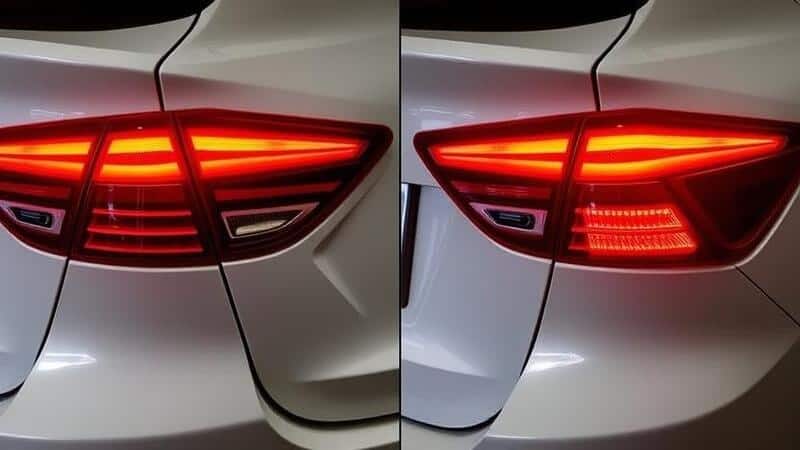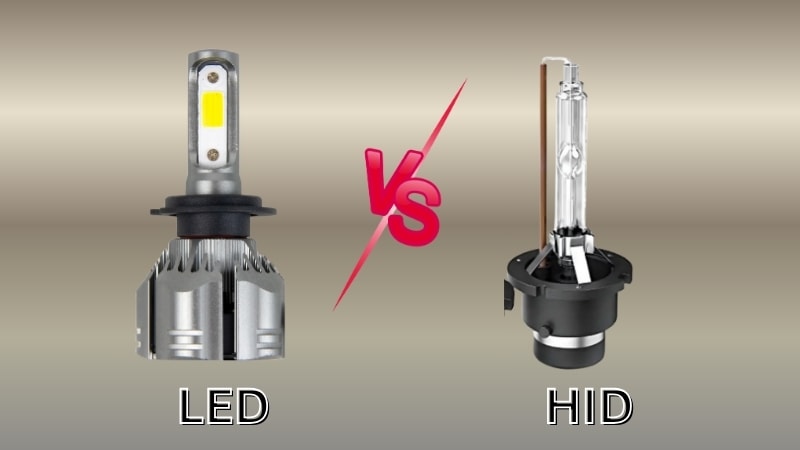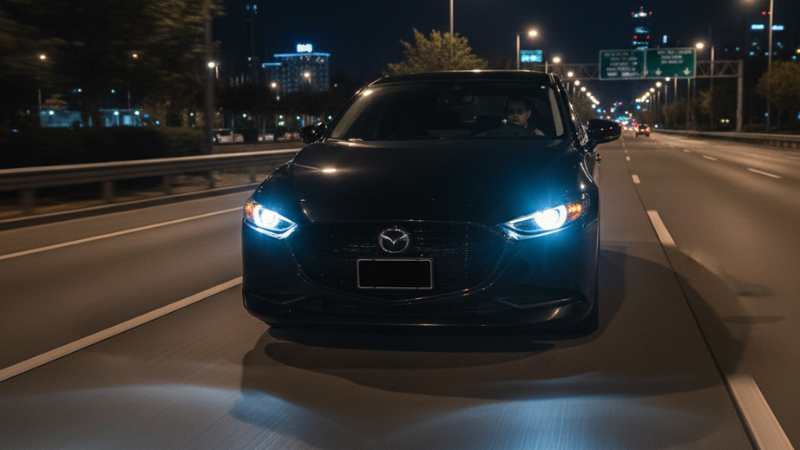Ever noticed that your tail lights are on, but your brake lights aren’t, or vice versa? You’re not alone. Our guide will teach you the common differences and the basic fixes for tail and brake lights to help you drive safely. And if you need new lights, CarlightVision can help you with that matter as well. Let’s clear the fog around your rear lights, starting with the basics.
Tail Lights vs Brake Lights: What’s the Difference?
Even though both tail lights and brake lights are mounted on the rear end of the car, they are vastly different. Both the lights serve separate purposes and operate under different conditions. The confusion is often increased by the fact that they are housed in the same tail light assembly.
Tail Lights
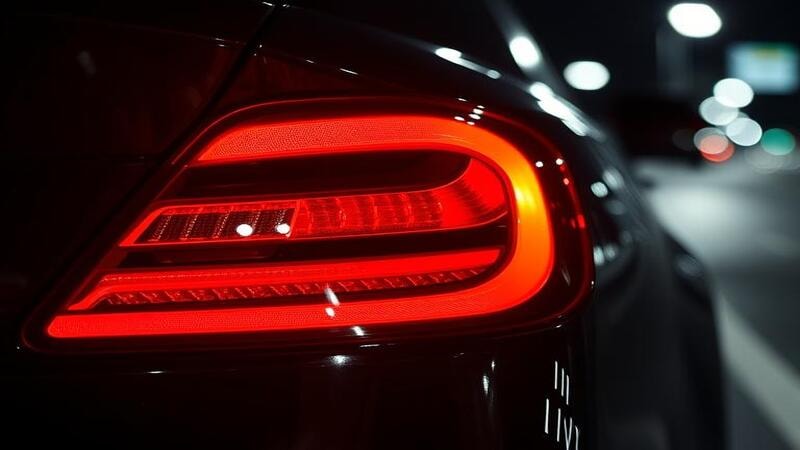
As soon as the headlights are activated, the tail lights turn on as well. They stay lit during low-light conditions. They emit a dimmer red light as compared to brake lights. Moreover, the tail lights are typically connected to the headlight switch.
Tail lights are installed as part of a safety strategy for preventing accidents. They are designed to help other drivers see your vehicle from behind in the dark.
Brake Lights
Brake lights only come on when you press the brake pedal. The color is a brighter red than the taillights. They are essential for maintaining road safety. Their job is critical as it alerts other vehicles if you are slowing down or stopping.
They serve as the crucial safety signal to reduce rear-end collisions. Lastly, the brake lights are connected to the brake light switch and not the headlight system.
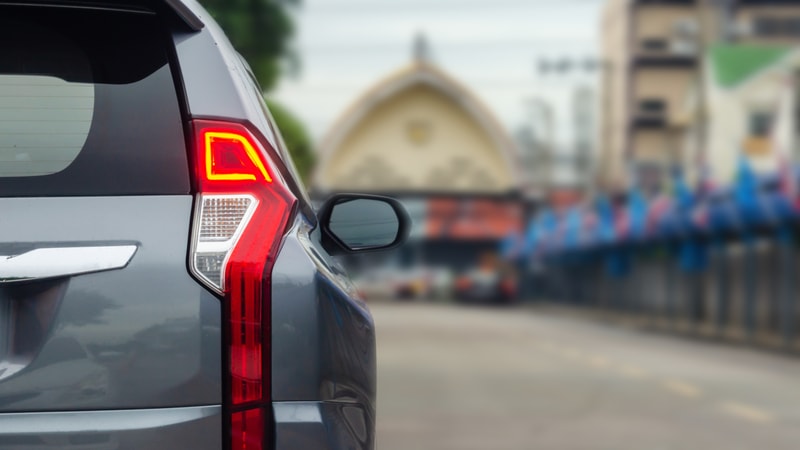
One commonality found in older vehicles is that both lights often share the same bulb. However, the bulb contains different filaments or intensity levels. This allows the system to emit different lights, and for one to fail while the other works.
Functionality of Brake Lights and Tail Lights
As a driver, understanding how each light functions is important. It can help you pinpoint issues faster and ensure your vehicle stays road safe. Let’s break down the functionalities of brake lights and tail lights.
The basic function of the brake light is to signal deceleration to vehicles behind you. Hence, it comes on when the brake pedal is pressed. It clearly indicates that the wiring system attached to it is connected to the brake pedal. In case of malfunction, you have to evaluate the entire system to find the cause.
On the other hand, tail lights remain on as long as the headlights are turned on. A tail light’s function is to make your vehicle visible to the oncoming traffic. If the tail light malfunctions, you have to inspect the headlight wiring system to find the cause.
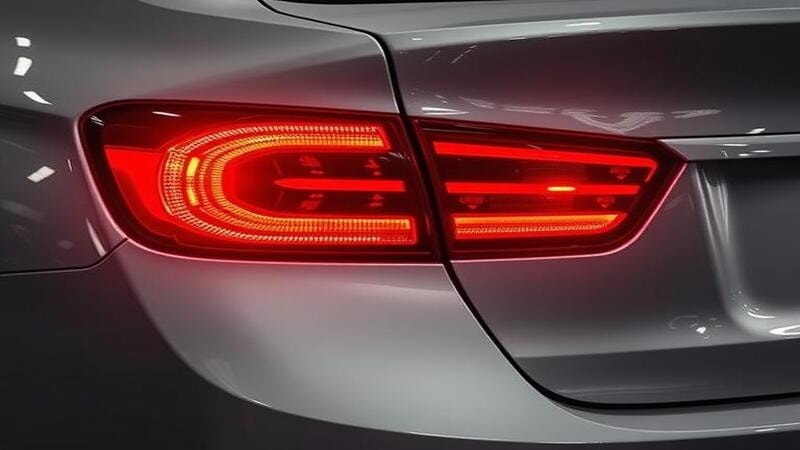
In most vehicles, the same bulb is used for both tail and brake lights. These are called dual filament bulbs. They have two filaments for different brightness levels that represent both lights.
| Feature | Brake Lights | Tail Lights |
|---|---|---|
| When They Activate | When the brake pedal is pressed | When headlights or parking lights are on |
| Purpose | Signals deceleration or stopping | Enhances rear visibility at night or in low light |
| Light Intensity | Brighter | Dimmer |
| Control Mechanism | Brake pedal switch | Headlight/parking light switch |
| Bulb Type (in many vehicles) | Dual filament (brighter filament) | Dual filament (dimmer filament) |
| Wiring System | Separate the circuit from the headlights | Shares circuit with front lights |
Are Brake Lights and Tail Lights the Same Bulb?
In many older and mid-range vehicles, the brake and tail lights use the same bulb. These are typically dual filament bulbs. One filament powers the tail light, which remains dim. When you push the brake pedal, the second filament becomes brighter.
Newer cars usually use individual lights or dedicated LED circuits. These provide improved performance and design flexibility. Even when they share a bulb, the brake and tail lights use separate electrical signals. Each has its own trigger mechanism and voltage path to minimize confusion during operation.
Do Tail Lights Come On with Headlights?
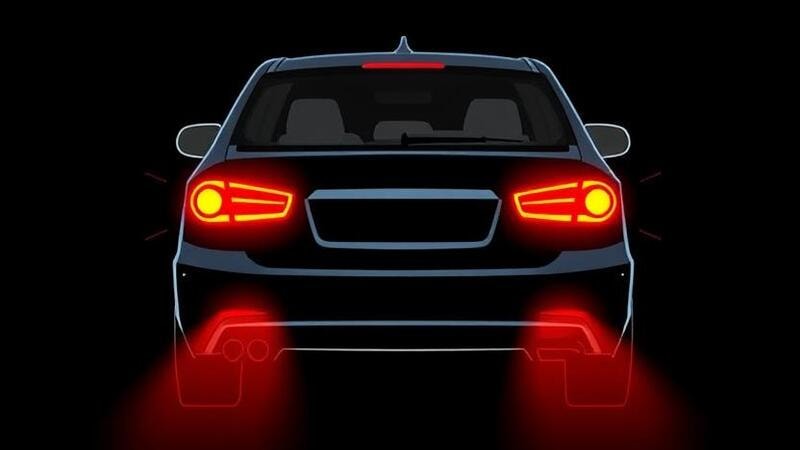
Yes, most vehicles’ tail lights activate when the headlights or parking lights are turned on. This improves your car’s visibility from the rear, especially in low-light conditions.
Tail lights in modern cars tend to activate automatically using built-in sensors. Some additionally include Daytime Running Lights (DRLs), which increase visibility during the day but do not always activate the tail lights.
If your vehicle has an automatic lighting system, the tail lights will normally turn on without your input as it becomes dark.
Why Are My Tail Lights Not Working, but Brake Lights Are?
One of the most common issues for drivers is this one. If the brake light doesn’t work properly while the tail light seems to function, then the problem lies in the brake light system. The first thing you should suspect is a blown fuse.
As tail lights have a separate fuse from brake lights, they can function regardless of brake light functionality. Another common cause is a burnt-out taillight filament. In dual filament bulbs, one side can still function while the other side fails.

Tail lights could also fail to light up due to wiring problems or short circuits. Look for signs of broken or exposed wires near the rear lighting harness.
The issue could also be caused by a defective headlight or light switch. It is possible that they may not be transferring electricity to the tail lights. It is particularly plausible if your dash or parking lights are also malfunctioning.
Finally, a damaged or dirty bulb socket might disrupt power transmission to the tail lights. Most older sockets are prone to moisture and dirt buildup.
What Causes Brake Lights to Stop Working?
Brake lights are vital for road safety because they alert other cars when you are slowing down or stopping. When they fail, it’s critical to detect and resolve the problem right away.
One of the most common causes is a blown brake light fuse. The fuse protects the brake light circuit against electrical surges. A quick inrush of electricity, particularly when the car starts, might cause the fuse to blow. Thus resulting in non-functional brake lights.

Moreover, brake light bulbs have a limited lifespan and can burn out over time. If one or both bulbs fail, the brake lights will not light up.
A faulty brake light switch could also be the reason for a malfunctioning brake light. It is located near the brake pedal. If the switch becomes jammed, the brake lights can fail to turn on or remain on indefinitely.
Furthermore, damaged wiring can also disrupt the electrical supply to the brake lights. The brake light wiring problems include concerns such as loose connections, frayed wires, and rust in the bulb sockets.

Over time, moisture and debris can build up in the bulb sockets, causing corrosion. Corrosion can damage the electrical connection, leading the brake lights to fail.
In vehicles with LED brake lights, a faulty controller or module can cause the brake lights to fail. Unlike traditional bulbs, LED lights rely on electronic controllers. If the light controller is broken, it can cause the entire lighting system to fail.
Understanding Rear Light Wiring: Brake Light vs Tail Light
Rear vehicle lights may look similar from the outside, but they follow different wiring paths and functions. Both brake lights and tail lights connect to your car’s electrical system, but they’re activated by different triggers and switches. Let’s break down the wiring systems.
Shared Power Source, Separate Triggers
The vehicle’s 12-volt electrical system powers both the brake and tail lights, but they switch on in distinct ways.
Tail lights are linked to the headlight switch. When you turn on your headlights or parking lights, power is routed through a fuse to the taillight circuit.
A brake light switch, typically located near the brake pedal, turns on the brake lights. When you push the pedal, the switch completes the circuit and powers the brake lights. So, while two lights may utilize the same battery power, they do not light up for the same reason.

Dual Filament Bulbs or Separate LEDs
In many older-style vehicles, both the brake lights and tail lights use a single bulb with two filaments:
- Low-brightness taillight filament
- High-brightness filament for brake lights
This is known as a dual-filament bulb, and it has three wires, one for each function and one for ground.
Modern automobiles use separate bulbs, each with its own wiring and control signal, resulting in more optimal performance, energy efficiency, and a longer lifespan.
Shared Ground Connection
The brake and tail light circuits typically share the same ground wire. The ground wire completes the electrical loop by enabling electricity to flow back to the battery’s negative terminal.
If the ground connection is rusted or destroyed, both lights may stop working, even if the power supply is operational.
Brake Circuit
The brake circuit features a brake light switch that closes the circuit when the pedal is pressed. A fuse that prevents power surges. Wires extend from the switch to the rear brake light housing. Some automobiles utilize a relay for better current control, particularly if the brake lights are LED-based.
Tail Light Circuit
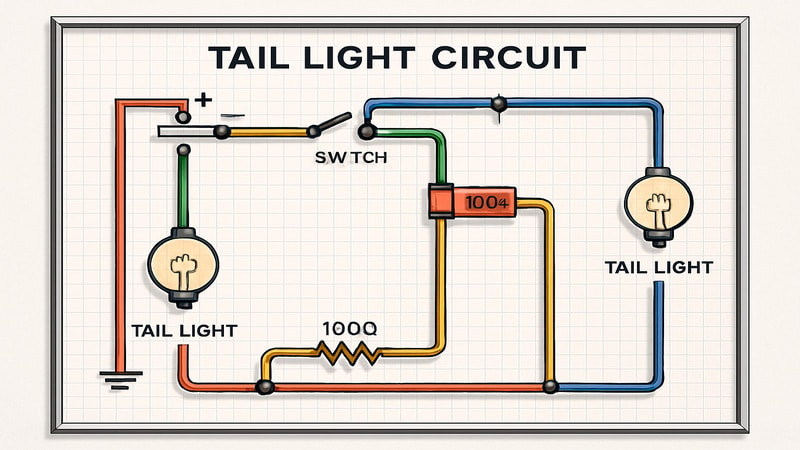
The tail light circuit includes the headlight or parking light switch, which provides power to the tail lights. A fuse specifically designed for tail lights. And wiring from the front dashboard to the back of the vehicle
Some modern cars employ automatic light sensors to operate this circuit. It automatically activates the rear lights when it becomes dark.
How to Repair or Replace Tail Lights and Brake Lights Yourself
Fixing rear lights may appear overwhelming, but many tail light and brake light issues can be resolved at home with only a few tools. Here is how you can do it yourself.
1. Inspect the bulbs
Open your trunk and remove the light housing (typically secured in place by a few screws or plastic clips). Check if the burnt-out bulb is the reason or if it’s broken. Replace with the same type of bulb.

2. Check the fuses
Use your owner’s manual to identify the fuse box and the brake or taillight fuse. Take it out and inspect it. If the metal strip inside is broken, replace the fuse with one with the same amp rating.
3. Test the sockets and wiring
If the bulbs and fuses work properly, inspect the bulb socket for corrosion or damage. Spray some electrical contact cleaning and use a soft brush if necessary. Also, make sure the wires leading into the socket are secure and not loose.
4. Replace the Switch
If your brake lights do not function but the bulbs and fuses are fine, the brake light switch near the brake pedal may be faulty. You can buy a plug-and-play switch and replace it.
5. Use a Multimeter for Testing
A multimeter can help more experienced DIYers test voltage in the socket or fuse to determine where the power stops. This helps to rule out electrical concerns.
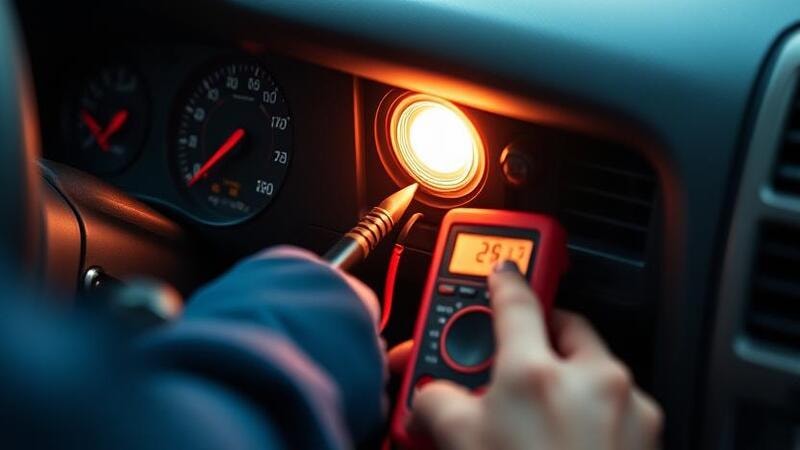
6. Do Not Forget LED tail lights
If your LED tail or brake lights fail, you may need to replace them entirely. Some models employ internal circuits that cannot be repaired individually.
FAQS
Q. How can I know if my taillight bulb has blown?
A. Check visually; if one side remains black while the headlights are turned on, it’s a sign. You can also remove the bulb to inspect the filament. A broken or discolored filament usually indicates that it has been blown. Some cars additionally have a dashboard warning light for external bulb failure.
Q. What is the purpose of the third brake light?
A. The third brake light, known as the Center High Mount Stop Lamp (CHMSL), is mounted higher than the regular brake lights. Its raised position guarantees that the brake signal is visible to drivers in taller cars or in heavy traffic.
Conclusion
Safe driving starts with understanding your vehicle’s lighting, especially the crucial differences between tail lights and brake lights. The brake lights turn on with the push of the brake pedal. While the tail lights are synced with the headlight system. Making sure both are in proper working order helps keep you, your passengers, and other road users visible and safe on every drive.
Whether you’re diagnosing a blown fuse, identifying wiring faults, or replacing a broken bulb, having the correct information allows you to make quick, confident repairs.
Need Help Buying the Right Lights or Replacing Your Customer’s Faulty Ones?
At CarlightVision, we stock energy-efficient, vehicle-specific tail and brake light solutions designed for easy installation and long-term performance. Whether you’re upfitting a commercial fleet, serving your own customers, or replacing faulty lights, our expert-approved products help you keep vehicles safely on the road. Explore our rear lighting range or contact us for professional help.
